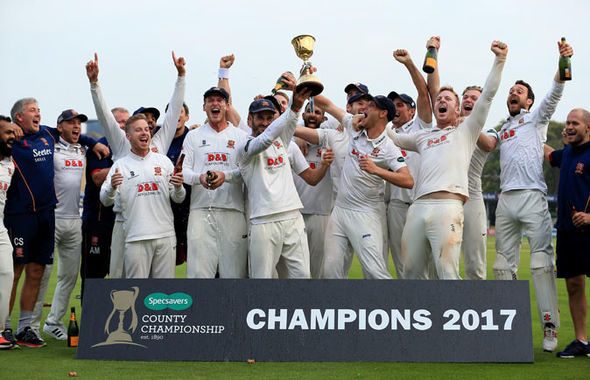In the often tumultuous world of English domestic cricket, where tradition clashes with the demands of a relentless modern schedule, a recent decision has sent a clear message: for the venerable County Championship, the status quo prevails. Despite widespread acknowledgment that the current structure faces significant pressures, a proposal to pare down the competition to 13 matches failed to garner the necessary support, ensuring the familiar 14-match format will endure for the 2026 season and beyond.
Red-Ball Resilience: A Nod to Tradition
For purists and proponents of long-form cricket, the news will be met with a measure of relief, perhaps even quiet triumph. The Professional County Cricket Clubs (PCCs) voted against a remodelled County Championship, which sought to introduce a 12-county `Championship` and a six-county `Championship Two.` This means the structure comprising ten teams in Division One and eight in Division Two, along with its established promotion and relegation rules, will remain unchanged. It’s a decision that, intentionally or otherwise, champions the existing framework of England`s premier red-ball competition.
One might consider this a moment of stoic resistance in an era obsessed with rapid change. While other sporting leagues globally are constantly tweaking formats to attract new audiences or manage player loads, the County Championship has, for now, elected to hold its ground. It’s a testament to the deep-seated value many still place on its established rhythm and traditions, even as the world around it accelerates.
A Tale of Two Ball Colours: White-Ball Changes Accepted
The decision regarding the County Championship, however, does not signify a complete aversion to reform across the board. In a subtle but significant contrast, proposals to revise the white-ball competitions were accepted earlier in the year. The T20 Blast group stage, for instance, will be reduced from 14 games to 12 and will be played in a more condensed block before The Hundred tournament. Furthermore, the One-Day Cup is set to increase to 10 group-stage matches from eight, indicating a willingness to adapt where deemed necessary or less contentious.
This dichotomy highlights a critical tension: while reforms for the shorter, more commercially vibrant formats seem to navigate the legislative hurdles with relative ease, the foundational red-ball structure appears less pliable. It suggests differing priorities or perhaps simply a recognition of where the immediate pressures and opportunities for innovation are most acutely felt.
The PCA`s Disappointment: A Battle for Player Welfare
Unsurprisingly, the Professional Cricketers` Association (PCA) has voiced strong disappointment. Daryl Mitchell, CEO of the PCA, did not mince words, stating that the outcome “fails to support the demands put on elite professional cricketers in 2026 and beyond.” This sentiment echoes a long-standing concern among players regarding the relentless schedule, which has been exacerbated by the packed English summer featuring a blend of international, domestic, and Hundred fixtures.
“At the start of the process, there was a consensus from all that the structure is not fit for purpose and change needed to happen… to remain with the status quo for the County Championship is a concerning decision.” – Daryl Mitchell, PCA CEO.
The PCA`s position is clear: the current setup, particularly for red-ball cricket, is unsustainable for player welfare and does not foster an environment for the highest quality cricket. Olly Hannon-Dalby, PCA Chair, further emphasized that while acknowledging the broader complexities of a global cricketing calendar, “we cannot relent in our ambition to create minimum standards to allow for a safer schedule.” It’s a compelling argument, suggesting that clinging to tradition might come at the cost of player longevity and the very quality of the game itself.
Navigating the Stalemate: What Next for English Cricket?
The failed vote for a reformed County Championship raises a pertinent question: if there`s a consensus that the structure isn`t fit for purpose, yet reform proposals are rejected, what is the path forward? Is this a temporary lull, a reflection of the challenges in forging broad agreement among 18 professional counties, each with its own vested interests and historical perspective? Or does it represent a deeper ideological divide on the future direction of English cricket?
While the red-ball format remains untouched for now, the underlying issues – player workload, the need for a structure that supports both elite performance and talent development, and the overall attractiveness of the product – persist. The decision, rather than resolving the debate, merely defers it, likely ensuring that the County Championship`s future structure will remain a topic of intense discussion and political maneuvering for seasons to come.
In essence, English cricket, much like a Test match on a flat pitch, finds itself in a period of watchful waiting. The stumps for the County Championship remain firmly planted in their original positions, but the cracks on the surface – and the persistent calls for change from those in the thick of the action – are undeniable. How long this steadfast approach can hold against the tide of modernization and player demands remains the ultimate question for this cherished competition.

